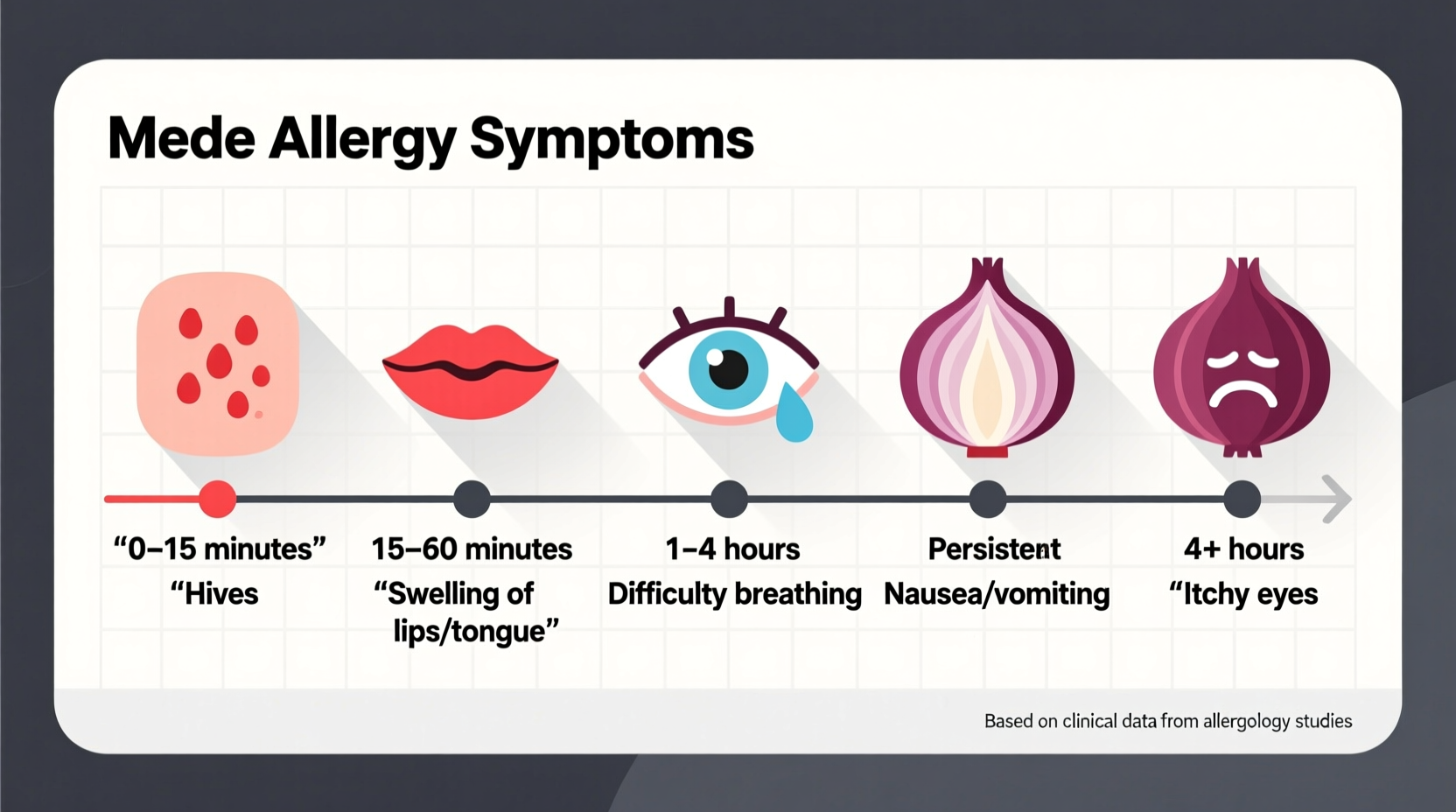If you're experiencing itching, swelling, or digestive issues after eating onions, you likely have an onion allergy—an immune system reaction to proteins in onions. Unlike intolerance, which causes digestive discomfort, a true allergy triggers IgE-mediated responses that can range from mild symptoms to life-threatening anaphylaxis. Immediate steps include avoiding all onion varieties (yellow, red, white), reading food labels carefully, and consulting an allergist for proper testing. This guide provides medically-reviewed information on symptoms, diagnosis, and practical management strategies.
Discovering you might have an onion allergy can feel overwhelming when this common ingredient appears in countless dishes. As someone who's helped thousands of clients navigate food sensitivities through my work in professional kitchens and culinary education, I've seen how proper understanding transforms daily living. Onion allergies, while less common than other food allergies, require specific management approaches that differ significantly from simple digestive intolerances.
Understanding Onion Allergy: Beyond Just a Stomach Upset
When your immune system mistakenly identifies onion proteins as threats, it triggers an IgE-mediated allergic reaction. This differs fundamentally from onion intolerance, which involves digestive enzymes rather than immune responses. The American Academy of Allergy, Asthma & Immunology confirms that true onion allergies involve specific immunoglobulin E (IgE) antibodies that activate histamine release.
What makes onion allergies particularly challenging is their variable presentation. Some people react only to raw onions, while others experience symptoms with cooked varieties. This depends on individual immune responses and how heat affects the allergenic proteins. Unlike many food allergies that primarily affect children, onion allergies often develop in adulthood, making them harder to identify initially.
| Allergy Characteristics | Onion Allergy | Onion Intolerance |
|---|---|---|
| Immune System Involvement | IgE-mediated reaction | No immune response |
| Onset Time | Minutes to 2 hours | Several hours to days |
| Common Symptoms | Hives, swelling, anaphylaxis | Bloating, gas, diarrhea |
| Cross-Reactivity | Common with other Alliums | Rare |
| Required Treatment | Epinephrine for severe cases | Digestive enzymes |
Symptom Recognition: When to Take Immediate Action
Recognizing your specific reaction pattern is crucial for safety. Most onion allergy symptoms appear within 30 minutes of exposure, though delayed reactions can occur. The National Institute of Allergy and Infectious Diseases categorizes allergic reactions by severity:
Typical Reaction Timeline
- 0-15 minutes: Oral itching, tingling lips, facial flushing
- 15-30 minutes: Hives, swelling around eyes/mouth, nasal congestion
- 30-60 minutes: Nausea, vomiting, abdominal cramps
- 60+ minutes: Difficulty breathing, dizziness, anaphylaxis (rare but serious)
Seek emergency care immediately if you experience throat tightness, wheezing, or rapid heartbeat. These indicate potential anaphylaxis requiring epinephrine. For milder reactions, antihistamines may provide relief, but always consult your allergist before self-treating.

Getting an Accurate Diagnosis
Self-diagnosis of onion allergy is risky—you might unnecessarily restrict your diet or miss a more serious condition. Board-certified allergists use three primary testing methods:
- Skin prick test: Small amounts of onion extract applied to your skin to check for raised bumps
- Specific IgE blood test: Measures antibody levels reacting to onion proteins
- Oral food challenge: Supervised consumption of gradually increasing onion amounts (gold standard)
The AAAAI emphasizes that elimination diets alone aren't sufficient for diagnosis. Many people mistakenly attribute digestive issues to onion allergy when they actually have fructose malabsorption or irritable bowel syndrome. Proper testing prevents unnecessary dietary restrictions while ensuring genuine allergies receive appropriate management.
Practical Management Strategies for Daily Living
Navigating an onion-free lifestyle requires specific strategies beyond simply avoiding obvious onion sources. Consider these practical approaches:
Reading Food Labels Like a Pro
Onion derivatives appear in countless processed foods under various names:
- "Natural flavors" or "spices" in soups, sauces, and broths
- "Bulb vegetable" on international product labels
- "Allium" ingredients in health supplements
- "Dehydrated onion" in seasoning blends and instant foods
Dining Out Safely
Restaurant meals pose significant challenges. When eating out:
- Ask specifically about mirepoix (onion-carrot-celery base) in sauces
- Request dishes prepared in clean pans with fresh oil
- Carry chef cards explaining your allergy in the local language when traveling
- Understand that "no onions" requests often don't account for hidden onion derivatives
Smart Substitutions in Cooking
As a culinary professional, I've developed effective onion alternatives that maintain flavor complexity:
- For savory depth: Fennel bulb (raw or roasted), celery root puree
- For umami: Mushrooms, roasted garlic (if not cross-reactive), asafoetida (hing)
- For texture: Jicama, radishes, or bell peppers in salads
- For broth base: Leek greens (if tolerated), carrot tops, or celery leaves
Remember that cooking methods affect allergen exposure. Boiling onions may reduce but doesn't eliminate allergens, while frying concentrates certain proteins. The Journal of Allergy and Clinical Immunology reports that heat-stable allergens in onions maintain reactivity even after cooking.
Living Well with Onion Allergy
While managing this condition requires vigilance, most people adapt successfully with proper strategies. Recent research shows promising developments in oral immunotherapy for vegetable allergies, though onion-specific protocols remain experimental. Support communities like the Food Allergy Research & Education network provide valuable resources and emotional support.
Maintain regular follow-ups with your allergist—some adults outgrow onion allergies over time, while others develop cross-reactivities to related Allium vegetables like garlic or leeks. Keeping a detailed food and symptom journal helps identify patterns and track your progress.











 浙公网安备
33010002000092号
浙公网安备
33010002000092号 浙B2-20120091-4
浙B2-20120091-4